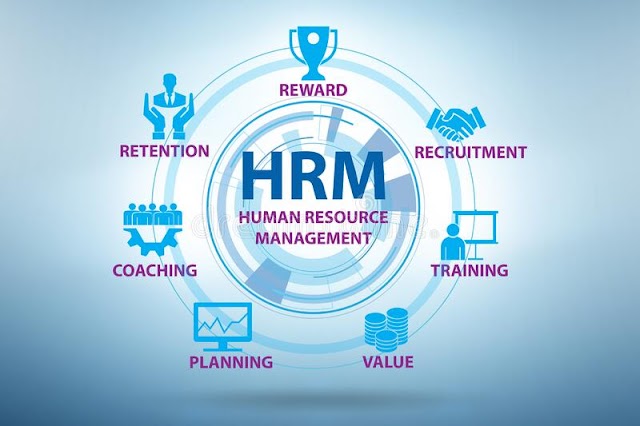1. Human Resource Management
1.1. What is Human Resource Management?
HRM is the study of activities regarding people working in an organization. It is a managerial function that tries to match an organization’s needs to the skills and abilities of its employees
Definitions of HRM
HRM is a management function concerned with hiring, motivating, and maintaining people in an organization. It focuses on people in organizations. That is designing management systems to ensure this human talent is used effectively and efficiently to accomplish organizational goals (Edward B. Philippo, 1985).
According to Invancevich and Glueck,(1989) “HRM is concerned with the most effective use of people to achieve organizational and individual goals. It is the way of managing people at work so that they give their best to the organization”.
According to Dessler, (2008), the policies and practices involved in carrying out the “people” or human resource aspects of a management position, including recruiting, screening, training, rewarding, and appraising comprise HRM.
Nature of HRM
HRM is a management function that helps managers to recruit, select, train, and develop members for an organization. HRM is concerned with people’s dimensions in organizations.
The following constitute the core of HRM.
- HRM Involves the Application of Management Functions and Principles.
- Decision Relating to Employees must be Integrated.
- Decisions Made Influence the Effectiveness of an Organization.
- HRM Functions are not Confined to Business Establishments Only
Scope of HRM
HRM in the New Millennium
- HR Can Help in Dispensing Organizational Excellence
- Human Resource Should be a Strategy Partner
- HR Accountability Should be Fixed to Ensure Employee Commitment
- The New HR Must Become a Change Agent
- Improving the Quality of HR
- Change in Employment Practices
- Benchmarking Tool Must be Mastered by HR Professionals
- Aligning Human Resources to Better Meet Strategic Objectives
- Promote From Within and Invest in Employees
- Review the Recruitment and Selection Process
- Communicate Mission and Vision
- Use Teams to Achieve Synergy
In conclusion
Organizations nowadays must better align their people resources to achieve their strategic goals. Time, effort, and money are squandered if this isn't done. Reviewing recruiting and selection procedures increases the likelihood that an organization will achieve this alignment with business objectives.
fit, convey the objective and vision statements, use collaborative goal-setting, create a suitable reward structure, empower employees, foster internal promotion, and leverage teams to create synergy.
The management function known as human resource management assists managers in organizing, recruiting, choosing, developing, training, compensating, and retaining employees. The four aims of HRM are personal, organizational, functional, and societal development. An organization needs clear procedures, established policies, and well-defined principles.








.jpeg)
11 Comments
Good content and worth for reading. Nicely explaining the keys points in HRM.
ReplyDeleteHuman resource management is a very big subject, So you try to cover it briefly.
ReplyDelete"Today's workplace is evolving rapidly, with HR professionals at the forefront of navigating these changes. From talent acquisition to employee engagement, our blog explores the latest trends and best practices to help HR teams thrive in this dynamic landscape. Stay informed, stay inspired, and stay ahead with our insightful content."
ReplyDeleteWell described blog on HRM...
ReplyDeleteIt seems okay. Please try to follow the harvard referencing style
ReplyDeleteHRM is the process of managing employees very effectively and efficiency to achieve organizational targets.This blog has well explained about HRM by definitions,scope ,objectives.
ReplyDelete
ReplyDeleteInsightful overview of HRM's core aspects. Clear definitions and contemporary roles highlighted effectively. Well-structured and informative content.
HRM well explained totally given key facts
ReplyDeleteHuman resource management (HRM) serves as a fundamental pillar for fostering a productive and aligned workforce within an organization. It encompasses a multifaceted approach that begins with recruiting the right talent and extends to nurturing and retaining that talent to meet both organizational and individual goals.
ReplyDeleteBy addressing these considerations, HRM can effectively manage the complexities of operating in a global context, leverage the diverse strengths of a global workforce, and drive sustainable growth and success for multinational organizations.
ReplyDeleteWell described blog in HRM
ReplyDelete